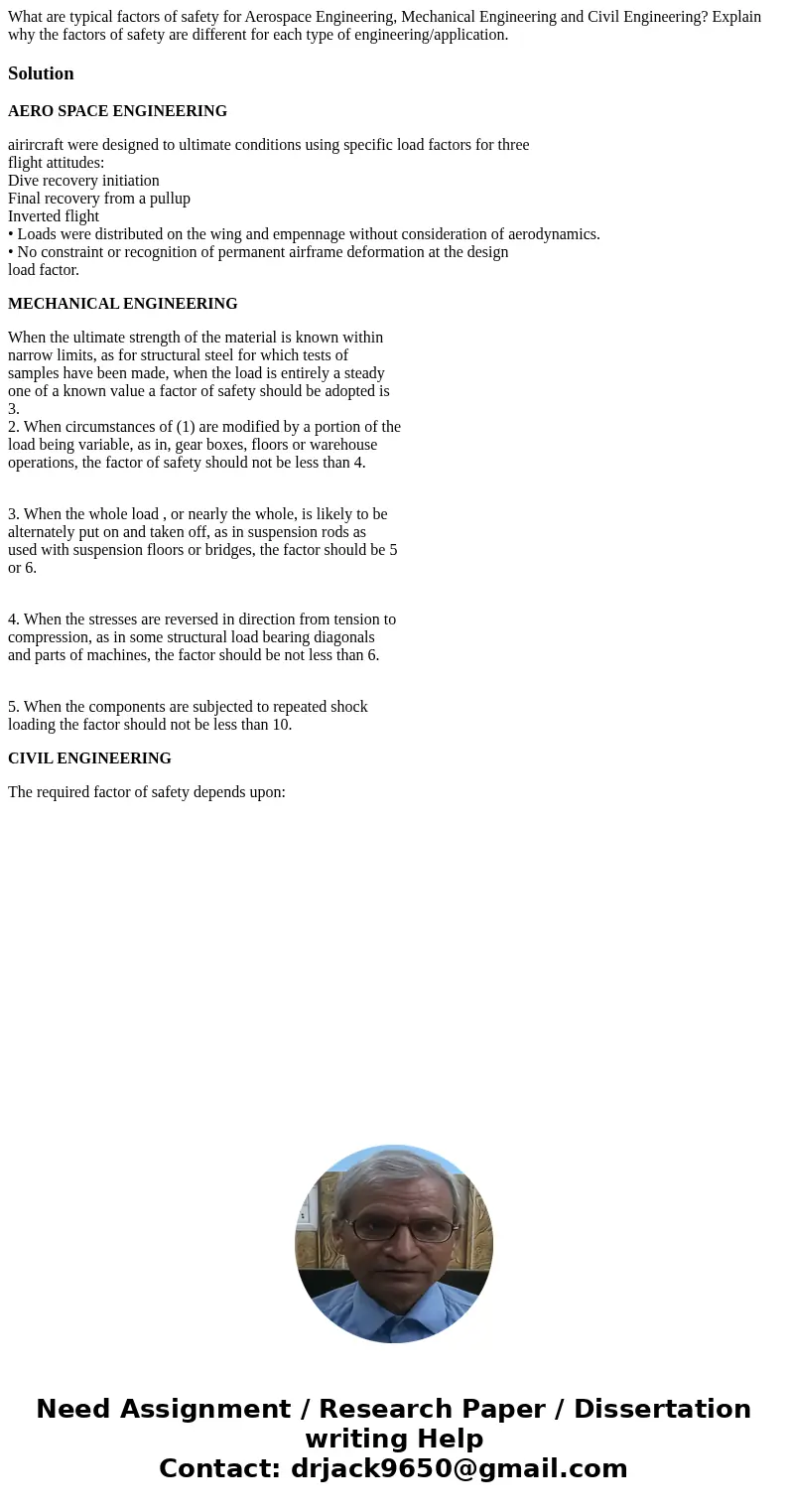What are typical factors of safety for Aerospace Engineering
What are typical factors of safety for Aerospace Engineering, Mechanical Engineering and Civil Engineering? Explain why the factors of safety are different for each type of engineering/application.
Solution
AERO SPACE ENGINEERING
airircraft were designed to ultimate conditions using specific load factors for three
flight attitudes:
Dive recovery initiation
Final recovery from a pullup
Inverted flight
• Loads were distributed on the wing and empennage without consideration of aerodynamics.
• No constraint or recognition of permanent airframe deformation at the design
load factor.
MECHANICAL ENGINEERING
When the ultimate strength of the material is known within
narrow limits, as for structural steel for which tests of
samples have been made, when the load is entirely a steady
one of a known value a factor of safety should be adopted is
3.
2. When circumstances of (1) are modified by a portion of the
load being variable, as in, gear boxes, floors or warehouse
operations, the factor of safety should not be less than 4.
3. When the whole load , or nearly the whole, is likely to be
alternately put on and taken off, as in suspension rods as
used with suspension floors or bridges, the factor should be 5
or 6.
4. When the stresses are reversed in direction from tension to
compression, as in some structural load bearing diagonals
and parts of machines, the factor should be not less than 6.
5. When the components are subjected to repeated shock
loading the factor should not be less than 10.
CIVIL ENGINEERING
The required factor of safety depends upon:

 Homework Sourse
Homework Sourse